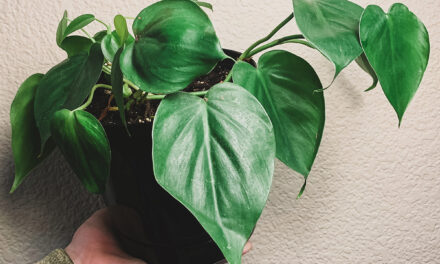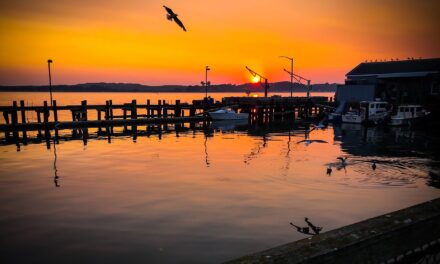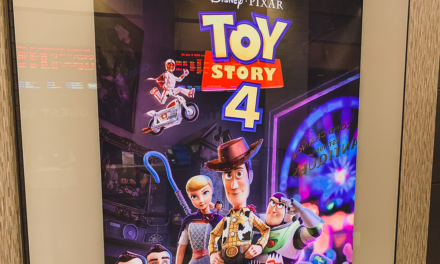Name: Luis Salgueiro
Kennel: “Sons of the Wind”: A Portuguese Sprint Micro-Kennel
Birthplace: Lisboa – PORTUGAL
Current Residence: Sobral de Monte Agra – PORTUGAL
Occupation: High School Teacher
Introduction To Our Musher
In the beginning I only wanted a dog (my first one) and the Alaskan Malamute was the chosen breed. I love its “wild look” and the beauty and majesty of its body. Then, in 1996 , I met a friend that created part of the first mushing club that appeared in Portugal and I too began to get involved in the movement. With this friend I “gave life” to a new mushing club and in 1999 I was making part of the Portuguese Mushing Federation Foundation, because meanwhile other clubs appeared in the scene. I still am part of the Board of Directors in this Federation. I’m now 46 years old and I’m a father of two children, one of them, 13 years old, already participates in the Portuguese Mushing Championship.
The Background of Our Musher
How did you get involved with the sport of dog sledding?
Well, I like dogs!
At first it was the romantic idea of sleddogs, snow, the wilderness in Alaska, the Balto history and the movie “Iron Will” that brought me to the Mushing Scene. But soon the competition and the adrenaline of running fast dogs in the trails got me,” and presently I’m addicted to dog mushing in a global way: the romantic and adrenaline aspects have congregated in just one feeling.
Could you tell us about your first mushing adventure?
The first time on the runners I was pulled just by two dogs: an Alaskan Malamute female and a Samoyed male. In Portugal the only mountain that has snow in the Winter is a mountain with few flat distances and the trails are always up and down. The start was at a descent and I was scared when the dogs started to run. I used the brake a lot but soon I found that there was no reason to fear the journey and in the end I was exhausted and all sweat due to parts when I had to push the sled helping the dogs on the hills.
Who have been your biggest supports during your mushing years?
I always searched for a lot of information in websites, books, magazines and I’ve had the help of some mentors. Especially Dori Hollingsworth and Lynn Orbison, that by e-mail always answered to the doubts and questions I had concerning dog’s training and behavior as well as other general mushing issues.
How long have you been addicted to mushing?
I’ve been involved since 1997. Ten years may seem not to much but it was 10 years full of action, dedication and improvement.
Maintaining A Kennel
How is your kennel setup?
My dogs live unchained in my dog yard, but I have covered fenced kennels to accommodate them when it is raining or for any other reasons.
How many lucky dogs currently enjoy your kennel?
I race in the 4-dog class, and only these four dogs live with me during the season. The few others live at my mother-in-law’s house
What is the feeding routine for your dogs?
I feed “Arden Grange Premium” and I join raw meat and other supplements during the racing season.
What is important to you when maintaining a kennel of working dogs?
Well, most of all, the dogs must feel comfortable and secure, so I do what is needed to satisfy them, and me.
Working With the Dogs
What physical attributes do you try and produce in one of your average sled dogs?
When they are puppies I’m concerned about if they are good eaters and drinkers, and when they are yearlings I would like to see a hard-work spirit along with a friendly disposition. I’ve only made one litter so I don’t risk much when is time to improve the team and I prefer to buy a puppy from another musher, a puppy that comes from proven sprint lineages.
What breeds do you currently mush with?
I have one Alaskan Husky, grandson of “Lingo” a famous George Attla dog, and the others are Eurohounds, sons of good sprint dogs raised by well-known European mushers like Heinrich Sthal, Jan Svensson, Helmut Peer, Bruno Milesi and Josep Domingo.
What is the demeanor like in all of your sled dogs?
I understand dogs well and I try to develop in each team a dogs that do what they do best: speed, strength, the response to orders, whatever . I try to make a “team” in the all acceptation of the word. They know they can trust me because I never push them besides their limits and, winning or not, in the end of the race they always feel that I’m proud of us as a team.
The Magical World of Puppies
During the first months of a puppy’s life, what does their training consist of?
I only harness break a puppy when he is 8 months old and the first training sessions are done in a short trail (2 miles length) that the leaders know well, to avoid any stress situations. I use a heavy cart and I also brake if needed to avoid high speeds and give trust to the puppy. In the first weeks the puppy runs in the wheel position but very soon I’ll give him a chance to prove that he is able to lead.
Training: The Hard Part
Could you describe your yearly training program?
At first I train in a low speed with a heavy cart, increasing miles step by step. This kind of training lasts about 2 months and when it’s over the dogs are already running fast, have built muscles and learned to respond to commands. Next, and during one month, I only change the cart for a lighter one and I introduce some Interval Trainings. At this stage the dogs are already running very fast and to improve speed I sometimes use a bike and I do some trainings running only a pair of them for each time. I help pedaling and the dogs go at their maximum speed. In the middle of January I have the team in very good shape for competition, running wild, with strength and speed. During February and March I only have to keep their shape and I use a multi-format training program that includes a bit of everything done before. All this training is accomplished with an adequate feeding program. I also usually spend one week in the Pyrenees, in a spanish mountain resort called Montgarri, training in snow. It’s intensive training, four sessions a day.
What tools are most important to you when training your sled dogs?
Free time!
What are your training goals each year?
Each year I try to achieve all that the dogs are able to give according to a Mushing TEAM conception : power, speed, but also honesty, dedication and joy. My training goal is to try to make a “team” in the all acceptation of the word. They know they can trust me because I never push them besides their limits and, winning or not, in the end of a race they always feel that I’m proud of us as a TEAM.
Racing: Oh Glorious Racing!
Do you race? If so, what races?
90% of the races are held in Portugal, the other 10% is choosen according to my professional schedule and financial possibilities, but I always attend one or two races abroad Portugal.
What are your goals during the racing season?
Each year the goal is to win all the competitions that I’m involved, especially in Portugal. When I participate in an international race the goal changes according to the level of the other participants involved.
Could you tell us about your first race?
My first race was in 1997. It was a dryland race (like most of them) and I remember that it was raining very much. The team was composed of Alaskan Malamutes and Samoyeds. I was a participant but I also belonged to the organization. I got 2nd place in the 4-dog class.
If you could, what are your racing strengths and weaknesses?
My racing weakness is my anti-sport lifestyle: I’m 47 years old and I don’t do much exercise, I smoke a lot and I sleep few hours a day. When it’s time to pedal or run uphills the dogs don’t have much help from me, and in a short classes like the 4-dog class, the musher must be very active helping the dogs (don’t forget that in Portugal the trails aren’t flat).
What Does the Future Hold?
What do you hope to accomplish with the dog sledding sport?
I hope that Mushing could bring me more friends and that the dogs could have a lifestyle according to their mental and physical needs.
What changes do you hope dog sledding makes in the near future?
In the future, I hope that the sport could be recognized as an Olympic Sport and be part of the Winter Olympics.
To the beginning musher, what advice would you give?
Get all the information you can about dogs usually used in the sport before choosing the type of dog you’ll stay with. Read as much as you can about others experiences in the sport before you decide to enter the sport and be aware that after getting involved with dogs and mushing your life never will be the same as it was and it will be better!
If mushers were to do something to perpetuate the dog sledding sport, what would that be?
I don’t know exactly maybe the memory of a sport that congregates Nature, Dogs and Man at its best!
Anything else for the dog sledding community to hear?
Good Mushing and Carpe Diem!





